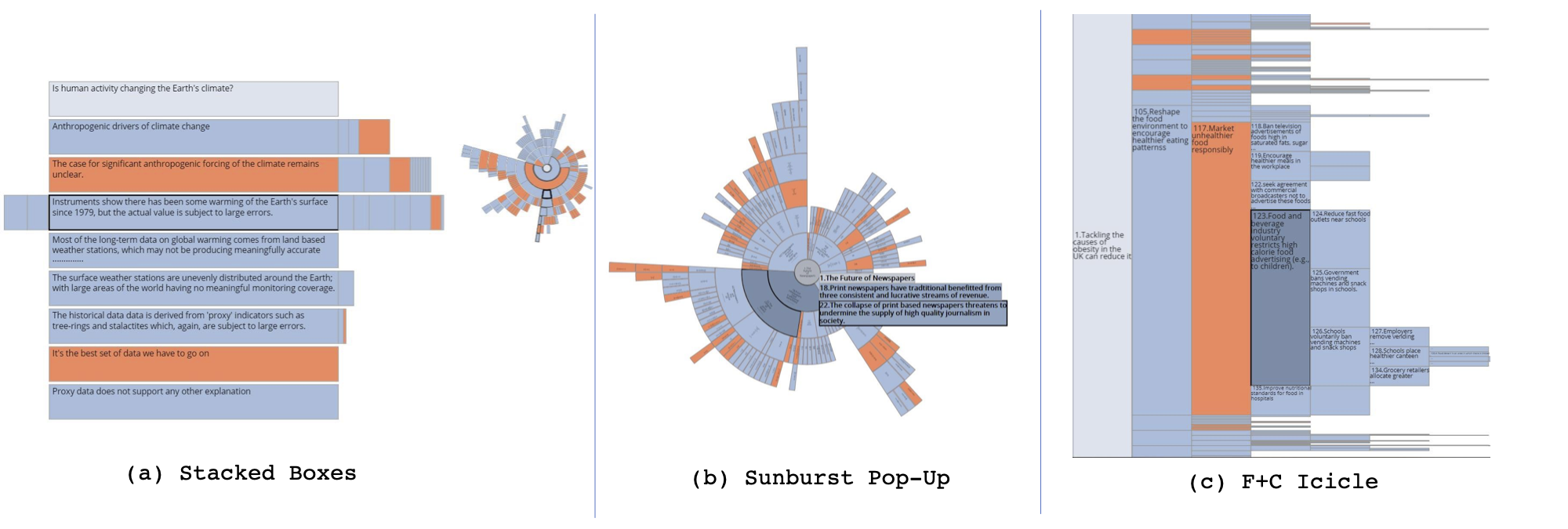People have long visualised argument structure in order to better understand and analyse arguments. Initially this activity was paper based and lead to a variety of diagram styles, for example, Wigmore produced a large and complex visual language to describe legal argument whilst Toulmin produced a compact and popular style for describing individual arguments.
Machines were used to support argument analysis and visualisation, leading to software such as Araucaria and Rationale, which define their own versions of the standard argument diagram familiar from basic logic. As the computational argument research community matured, the Argument Interchange Format (AIF) was developed to support the exchange of structured argument data between software platforms that might perhaps use their own internal argument representation languages like SADFace.
In parallel, a recent topic in argumentation that has been the subject of intense scrutiny is Argumentation Mining, the automatic recognition, extraction, and reconstruction of arguments from natural language resources. The ultimate promise of effective argumentation mining is for all arguments that are expressed to be mined from all texts that contain them. This suggests that we’ll have access to truly large datasets of arguments. These are datasets at a scale which outrank all current argument visualisation efforts.
The goal of argument cartography is to track the development of increasingly large-scale argument datasets and to develop suitable techniques for argument visualisation and exploration at scale.
Dana has worked on a range of visualisations that target the problem of “visualisation at scale”, some of which can be seen here:

Publications
- D. Khartabil, C. Collins, S. Wells, B. Back, J. Kennedy (2021) “Design and Evaluation of Visualization Techniques to Facilitate Argument Exploration”
- D. Khartabil & S. Wells (2017) “Mapping Increasingly Large Networks of Argumentative Inferences”
- D. Khartabil, S. Wells, & J. Kennedy (2016) “Large-scale Argument Visualization (LSAV)”